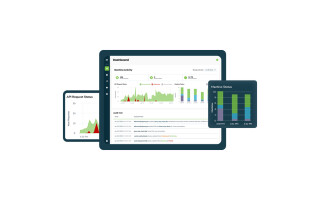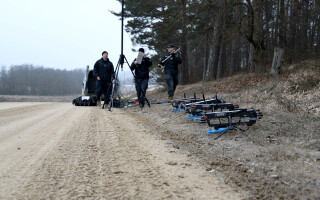How can holographic solutions improve military planning and training?
NewsMay 05, 2025

SOF WEEK 2025 -- Tampa, Fla. The need to provide more realistic planning and simulation capabilities to military personnel has pushed the industry toward developing and improving holographic solutions. Although it still seems a bit like sci-fi, this type of technology has been gaining ground across the globe by promising to enable better preparing warfighters for tomorrow’s warfare.
This type of technology has been used to allow troops to visualize in a three-dimensional way the scenario, environment and terrain as well as the threats to their mission before arriving at the theatre of operations.
This approach can facilitate predicting the adversary’s movements and manoeuvres and anticipate issues in harsh locations. It can also improve situation awareness in multidomain operations as the use of holograms can be applied in all defence domains.
Robert Hinsley, Director of Business Development for the defense industry within the Canadian supplier of holographic solutions, Avalon Holographics, explains that this type of capability is “really a game-changing technology”.
According to him, it “supports rapid, articulate, accurate decision making and mission planning, technical route planning, threat analysis”.
“If you have multiple assets, whether it is air and ground, or you are doing a simultaneous breach in multiple floors, are hitting a target for multiple directions, you can plan out that timing and coordination piece a lot better, which actually will end up saving lives with a more efficiently planned operation”, Hinsley states.
Avalon Holographics will showcase its first (preNOVAC) and second-generation (kidNOVAC) projector-based holographic displays at the SOF Week exhibition in Tampa, Florida. Both capabilities were acquired by the Royal Canadian Navy. (Figure 1.)
.jpg)
[Figure 1]
The preNOVAC was developed between 2015 and 2021 and provides a 5.4” depth, 0.85K PPI pixel density and 29” display size. It is fitted with off-the-shelf projectors (Avalon Holographics)custom-built software and electronics and does not require the use of headsets, glasses or other augmented (AR), virtual realities (VR) devices.
The company claims in a press release that the solution was designed “to validate every core subsystem required for true holography from optics and mechanics to custom firmware and rendering engines” and offer “a natural, shared viewing experience, allowing multiple users to view and interact with holographic content simultaneously — without discomfort or disorientation”.
“The gen one technology has about a full range depth of imagery, which you can still interact with that hologram itself,” Hinsley points out.
Meanwhile, kidNOVAC was built from 2021 to 2022 and features a depth of 10.5”, pixel density of 2.4K PPI and display size of 11.5”. Its custom-designed, proprietary projection engine has improvements in pixel density and clarity compared to the first-generation system.
Hinsley remarks that the company is currently working on the next generation of holographic displays. “We are about to complete an R&D [research and development] agreement to be able to really showcase this technology,” he says.





